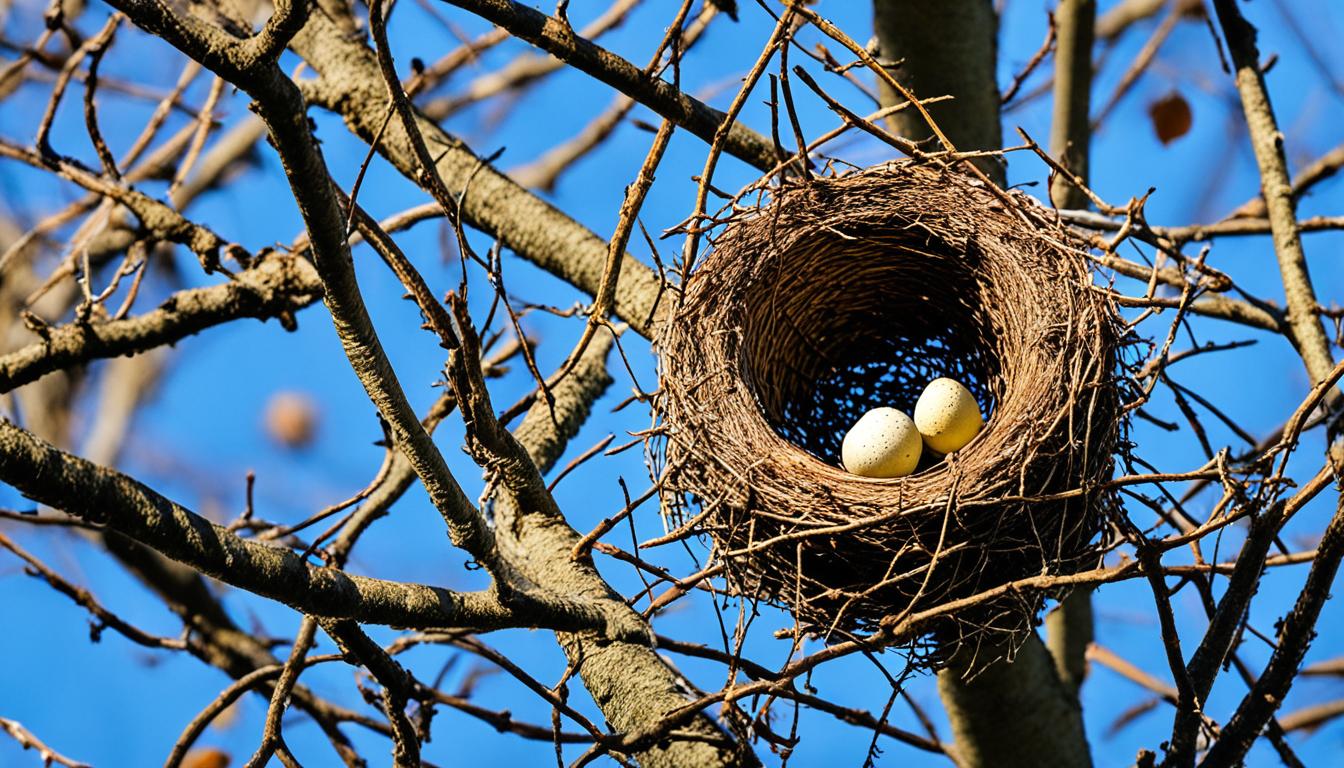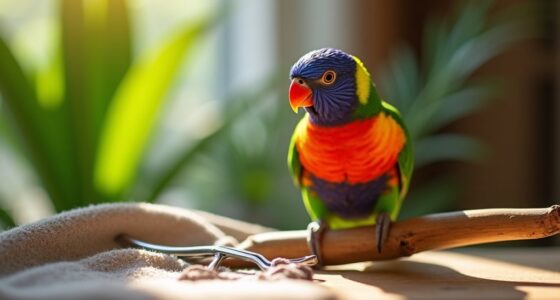Did you know that around 90% of bird species are known to abandon their nests? Whether it’s due to predation, lack of resources, or the end of the breeding season, it’s not uncommon for mother birds to leave their nests behind. But how can you determine if a mother bird has indeed abandoned her nest? In this article, we’ll give you crucial tips to assist you in recognizing the signs of an abandoned bird nest and advise you on what to do if you encounter one. Let’s get started!
- Recognize the signs of an abandoned bird nest, such as cold eggs or the absence of the mother bird.
- Monitor the nest for signs of return before taking any action.
- Avoid touching or disturbing the nest to prevent negative consequences.
- Seek guidance from a wildlife professional if needed.
- Protect and support bird populations by understanding and respecting their nesting journey.
Signs of an Abandoned Nest
When it comes to identifying an abandoned bird nest, there are several telltale signs to look out for. These signs can help us determine whether the nest has been left unattended or if the mother bird will return.
Lack of Warmth in the Eggs
One of the most evident signs of an abandoned nest is the lack of warmth in the eggs. If the eggs feel cold to the touch for an extended period, it is likely that the mother bird has been absent from the nest for too long or has permanently abandoned it. The absence of warmth suggests a lack of incubation, and the eggs may no longer be viable for hatching.
Signs of Injury or Distress in the Nest
Another indication of an abandoned nest is the presence of signs of injury or distress within the nest itself. This could include broken eggs, scattered feathers, or any other visible damage. These signs suggest that there may have been some form of disturbance or harm to the nest, indicating a potential abandonment by the mother bird.
Absence of the Mother Bird for Extended Periods
Perhaps the most apparent sign of an abandoned nest is the extended absence of the mother bird. If the mother bird has not returned to the nest for an extended period, it is a clear indication that the nest has been abandoned. The length of time may vary depending on the bird species, but an extended absence without any signs of the mother bird’s presence is cause for concern.
By being observant of these signs, we can determine whether a nest has been abandoned by the mother bird. However, it’s important to note that these signs alone may not provide a definitive answer. Monitoring the nest for signs of return and seeking guidance from a wildlife professional are essential steps to ensure the well-being of the nest and its inhabitants.
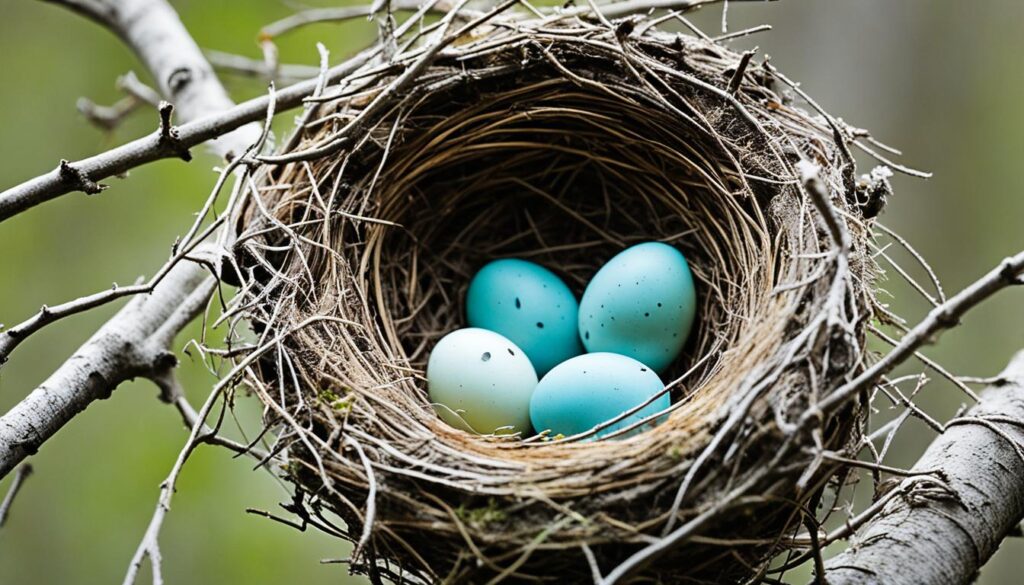
Observing these signs and taking appropriate action can help us protect and support bird populations, promoting the welfare of these marvelous creatures in our ecosystem.
Reasons Why a Mother Bird May Abandon Her Nest
When it comes to abandoned bird nests, there are several reasons why a mother bird may make the difficult decision to leave. Understanding these reasons can help us better comprehend and identify instances of abandonment. Let’s explore some of the most common factors that lead to a mother bird abandoning her nest:
- Lack of Food or Resources: One significant reason for nest abandonment is the scarcity of food or resources. If a mother bird is unable to find enough nourishment to sustain herself and her nestlings, she may be forced to abandon the nest in favor of her own survival.
- Predation or Disturbance: Feeling unsafe in their surroundings can also push mother birds to abandon their nests. The presence of predators or constant disturbances, such as human interference or other animals, can cause extreme stress and anxiety for mother birds. To protect themselves and their offspring, they may choose to leave the nest and relocate to a safer location.
- Completion of the Breeding Season: As the breeding season comes to an end, some bird species naturally abandon their nests. This behavior is part of their natural instincts, signifying the completion of their parenting duties. Once their chicks have fledged or reached independence, mother birds may no longer find it necessary to stay and protect the nest.
By understanding these reasons for nest abandonment, we can gain valuable insight into the behavior of mother birds and the challenges they face. It’s important to remember that nest abandonment is a complex decision influenced by various factors, and each situation may have unique circumstances.
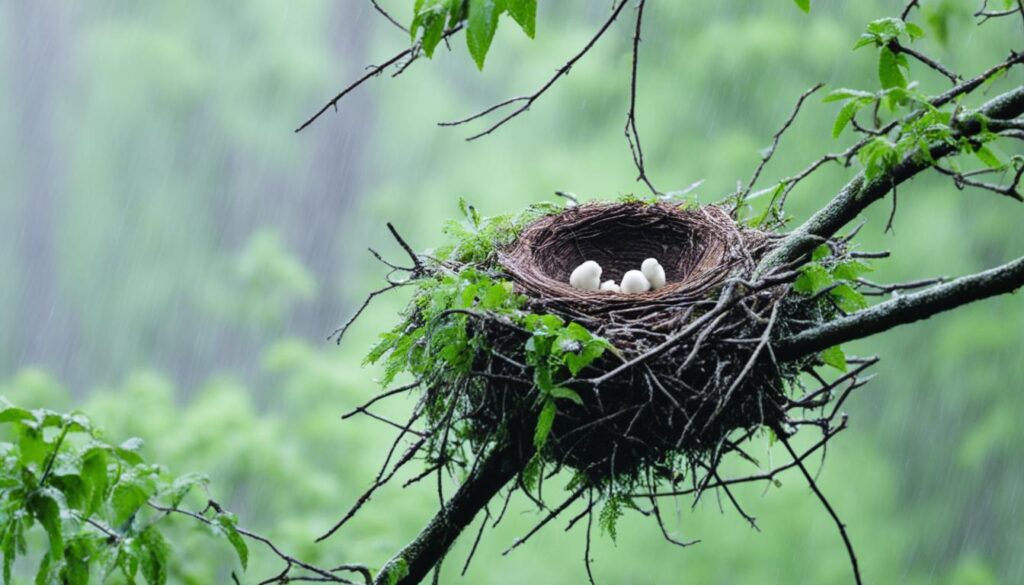
What to Do if a Mother Bird Has Abandoned Her Nest
If you come across an abandoned bird nest, it is crucial not to interfere immediately. Touching or disturbing the nest can have negative consequences and may cause the mother bird to permanently abandon the nest. Instead, it is recommended to monitor the nest for signs of return.
Observing the nest from a distance and checking for any activity or changes in behavior can help determine if the mother bird has truly abandoned the nest. Sometimes, the mother bird may temporarily leave the nest to gather food or take a short break.
Monitor the nest for signs such as:
- Any activity around the nest, such as the mother bird returning with food or nesting material
- Changes in temperature, as a mother bird sitting on the eggs will provide warmth
- Movements or sounds from inside the nest, indicating the presence of hatchlings
By patiently monitoring the nest, you are allowing the mother bird the opportunity to return and continue caring for her young.
If unsure about what steps to take, it is advisable to contact a wildlife professional for guidance. They are equipped with the knowledge and experience to assess the situation and provide appropriate advice.
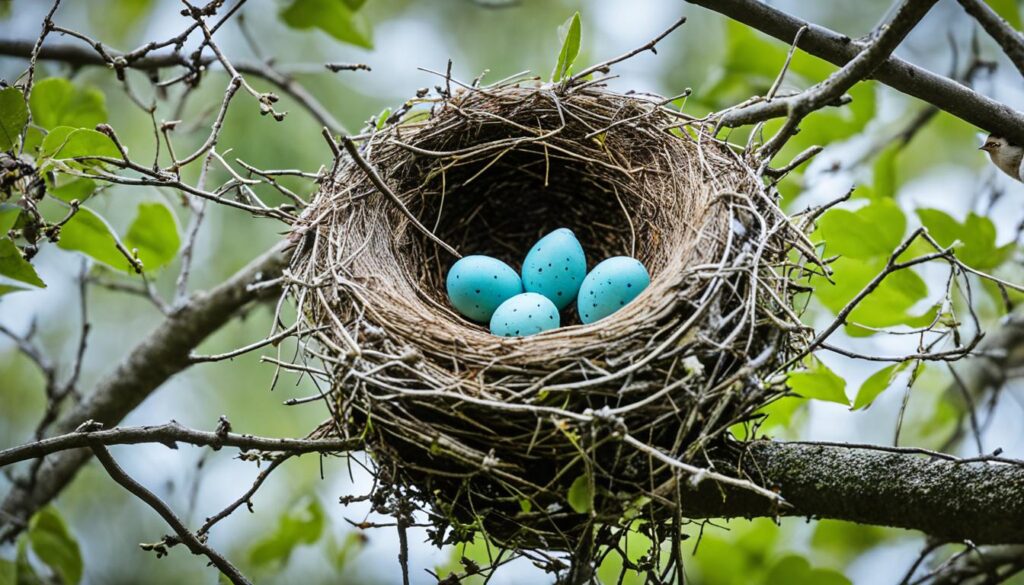
Can You Touch or Remove Eggs/Chicks from an Abandoned Nest?
When encountering an abandoned bird nest, it’s crucial to handle the situation with care and consideration. While the temptation to touch or remove the eggs or chicks may arise, it is not recommended to do so immediately. Interfering too soon can pose risks and potentially result in the mother bird permanently abandoning the nest.
There are several risks and considerations to keep in mind when faced with an abandoned bird nest:
- Disturbing Natural Processes: Removing eggs or chicks from an abandoned nest can disrupt the natural processes of wildlife. By allowing the mother bird to care for her young, we contribute to the overall ecological balance and ensure the survival of bird populations.
- Potential Harm: Touching or handling eggs or chicks without professional guidance can cause harm. Young birds are fragile and require specific care and conditions to thrive. Without the necessary knowledge and experience, our actions may unintentionally harm or even cause the death of the young birds.
- Legal Implications: It’s important to be aware of the potential legal implications of handling eggs or chicks from an abandoned bird nest. Wildlife protection laws vary by location, and it is essential to understand and adhere to these regulations to avoid any legal consequences.
For guidance on handling abandoned bird nests, it is recommended to seek assistance from wildlife professionals. They have the expertise and knowledge to determine the best course of action and ensure the welfare of the birds and compliance with relevant laws.
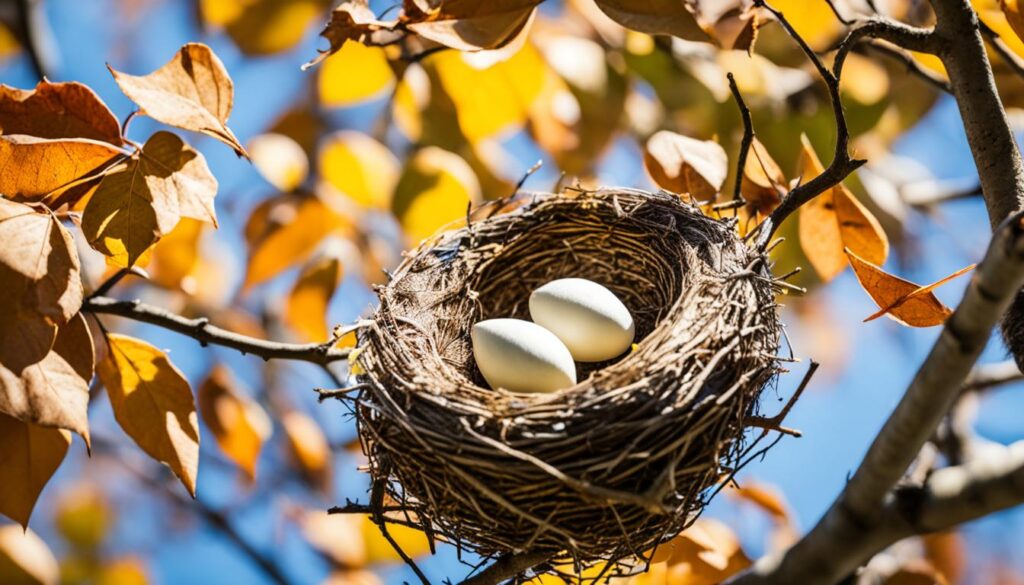
Risks and Considerations when Handling Abandoned Bird Nests
| Risks and Considerations | Explanation |
|---|---|
| Disturbing Natural Processes | Removing eggs or chicks disrupts wildlife’s natural processes and ecological balance. |
| Potential Harm | Inexperienced handling can unintentionally harm and endanger young birds. |
| Legal Implications | Compliance with wildlife protection laws varies by location and must be observed. |
Conclusion
After understanding the signs of an abandoned bird nest, we can better determine if a mother bird has truly abandoned her nest. It is crucial to approach this situation with patience and caution, allowing time for observation and monitoring before taking any action. By interfering too soon, we risk disrupting natural processes and potentially causing harm. Our actions play a vital role in protecting and supporting bird populations and their nesting journey.
By recognizing the signs of an abandoned nest and taking appropriate action, we contribute to the preservation of bird populations. It is our responsibility to respect and protect these delicate ecosystems. Remember, determining if a mother bird has abandoned her nest requires careful observation and understanding.
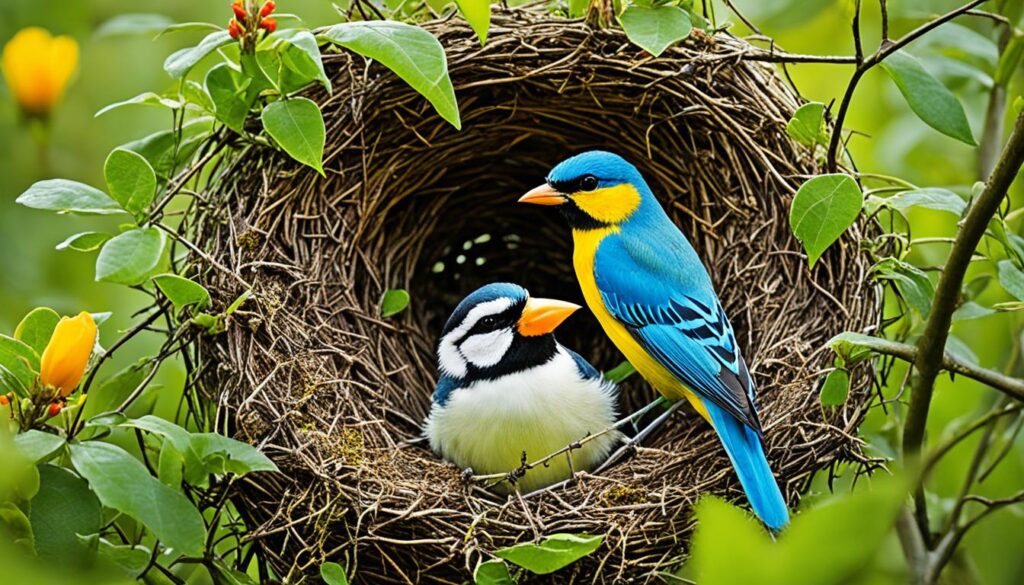
How to Tell If a Bird Nest Is Abandoned or Just Empty?
When inspecting a bird nest, look for signs of abandonment. If the nest appears disheveled and not well-maintained, it may be abandoned. However, if the nest looks clean and intact, it might just be empty. Be sure to wear a mask or consider other bird allergy symptoms relief options when checking for nests.
FAQ
Here are answers to some frequently asked questions about determining if a mother bird has abandoned her nest and handling eggs or chicks from an abandoned nest:
1. How can I tell if a mother bird has abandoned her nest?
To determine if a mother bird has abandoned her nest, look for signs such as cold eggs, signs of injury or distress in the nest, and an extended absence of the mother bird. However, it’s important to monitor the nest for signs of return before taking any action. If unsure, it is best to seek guidance from a wildlife professional.
2. Can I touch or remove eggs or chicks from an abandoned nest?
No, it is not recommended to touch or remove eggs or chicks from an abandoned nest immediately. Interfering too soon may cause harm and could result in the mother bird permanently abandoning the nest. There are also potential legal implications, as laws protecting wildlife vary. Contacting a wildlife professional can provide guidance on the appropriate course of action.
3. What should I do if I find an abandoned bird nest?
If you come across an abandoned bird nest, it is important not to interfere immediately. Instead, observe the nest from a distance and monitor for signs of return. If you are unsure about what steps to take, it is advisable to contact a wildlife professional who can provide guidance based on the specific situation.
4. Why is it important to protect bird populations and their nesting journey?
Protecting bird populations and their nesting journey is crucial for maintaining biodiversity and ecological balance. Birds play vital roles in pollination, seed dispersal, and insect control. By understanding and respecting their nesting habits, we can contribute to the conservation and preservation of these magnificent creatures.
